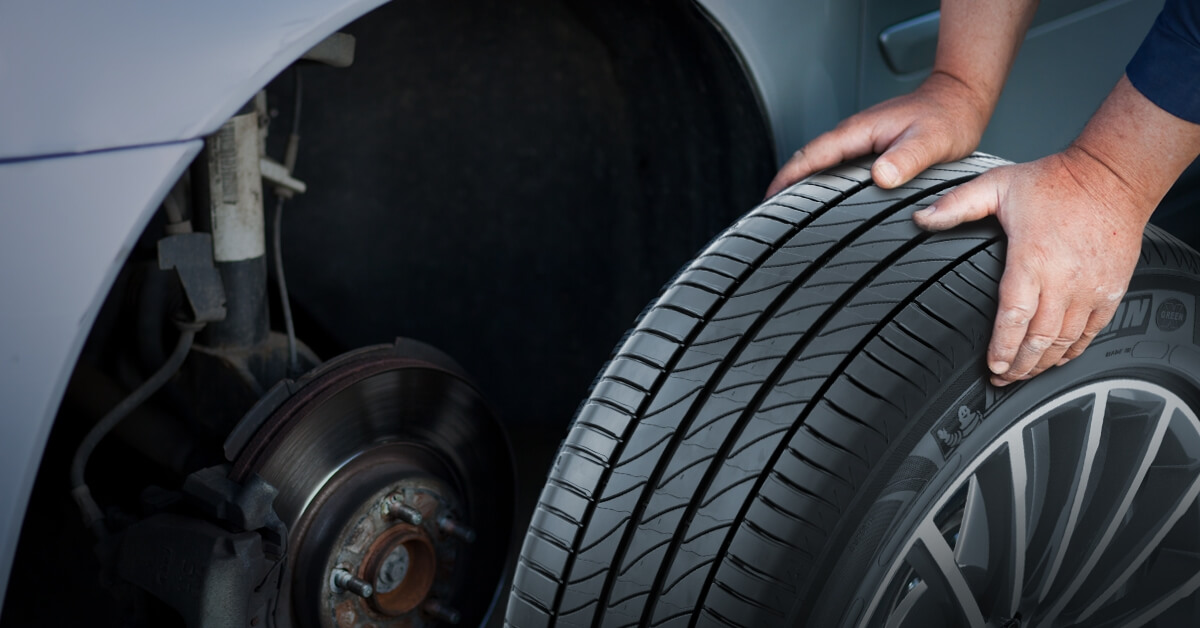How often do you need to change tyres
How do you know when you need new tyres? Read further to understand.

Tyres are very important as they greatly affect how the car accelerates, handles, and brakes. As the tyres become old and start wearing out they start losing their performance in certain areas. It’s right before this that you need to start looking to invest in a new set of tyres. In a region like the Middle East, the extreme heat of summer can expose the fragility of worn old tyres making them extra prone to blowouts. It is, therefore, important to know when it’s the right time to change your tyres. Read on to know more about how often you need to change tyres, how long do tyres last and much more.
When to change your car tyres?
While proper tyre maintenance like tyre rotation, wheel alignment, balancing, tyre pressure check can lessen the rate at which the tyre wears, every tyre needs to be replaced after a certain period of time. Listed below are few indications that will help you know when you need new tyres.
1. Tyre tread
Every tyre has a wear - which can be seen between the treads. If the tread is even with the tread wear indicator then the tyre has worn out and needs to be replaced. It also means that the tread depth of the tyre is almost certainly close to the permissible limit of 1.6 mm. As recommended by global tyre manufacturers a tyre has to be replaced when any portion of the tread is worn down to 1.6 mm.
2. Tyre damage
Some tyres may have tread left on it however, you need to take a closer look to see if the tyres have cuts, cracks, bulges, uneven wear or if they have dry rotted. In many cases such damages are irreversible and the tyres need to be replaced.
For e.g. dry rotting is a perfect candidate for the tyre to blow out when you have a high load on it or high heat while driving down the highway in summer.
There could also be cases where the tyre passes the tread wear test and don’t look dry rotted too. But you might notice high and low spots across the surface of the tyre tread. This is called cupping. This is an indication of a bad strut or a bad shock where the tyre is bouncing down the road and dishing out. The tyre in this case too need to be replaced
3. Tyre puncture
A punctured tyre has to be thoroughly examined from the inside to check if it can be repaired or needs to be replaced. Michelin recommends tyres with tread punctures larger than 1/4" or any sidewall puncture should be replaced and not repaired.
4. Tyre age
Tyres show signs of ageing when used frequently or occasionally or even when unused. A number of factors like driving style, vehicle type, climatic conditions, road conditions, maintenance routine etc. contribute to the ageing of the tyres. Hence, no matter when the tyres were manufactured they will age differently based on various conditions. So be vigilant about the external appearance of your tyres and see a tyre expert if you notice signs of ageing.
How many years should tyres last?
Most tyre manufacturers mention you shouldn’t run tyres that are over 10 years old. However, the tyre compounds start to harden and can become brittle after 5 to 6 years because of oxidation. Hence, the tyres need to be thoroughly investigated at least once a year after they reach 5 years of age from the manufacturing date. It is easy to look around the sidewall of your tyre to find the manufacturing date. It is represented in 4 digits e.g. 2619, where the first 2 digits i.e. 26 represents the week of that year and the last 2 digits i.e. 19 represent the year. Hence 2619 means the tyre has been manufactured in the 26th week of the year 2019.
There is however no official expiry date for tyres. Storage, climate, vehicle load, tyre pressure and driving style can all play an important role in the lifespan of a tyre. A tyre deteriorates just as much when it sits unused as when it’s on a roadway. If you drive a lot you will see the tread wear out first but if you are an occasional driver you have to worry about the rubber. Hence, inspect your tyres periodically and use the right tyres for your climate.
Should I Change All Tyres At Once?
Assume you have an old pair of shoes with a broken heel on one of them. Would you buy only one new shoe and wobble around in different heels, or would you buy a new pair? You would definitely go for a new pair. You need to look at your tyres in a similar way. In order to brake, accelerate and steer optimally your car needs to have four good tyres that are of identical size, type and specifications. Hence leading tyre manufacturers suggest changing all four tyres at once.
If you decide to replace less than four tyres, the industry recommendation is to replace your tyres in pairs. Buying two tyres together ensures that you have an identical tread pattern, tread level and handling characteristics. Uneven tread level, traction and handling between tyres on the same axle can adversely affect your vehicle suspension, ride quality and even your safety. So if you decide to replace only two tyres, where should you put them? Front or Rear Axle? The answer is your two new tyres should always go on the rear axle no matter what type of vehicle it is, because it’s safer (only when front and rear tyre size are the same) .
To understand better, let’s see what happens in these 2 different cases.
1. New tyres fitted on the front axle - If the new tyres are placed at the front, there is a potential risk of oversteer in wet conditions. The old tyres at the back of the vehicle will lose grip and hydroplane first. And if the tyres at the back lose traction due to hydroplaning the vehicle will begin to fishtail.
This means the car with new tyres at the front is more likely to hydroplane, fishtail and spin fast. The driver in this case will lose control of the car on wet surface leading to hazardous situations.
2. New tyres fitted on the rear axle - If the new tyres are placed at the back, there is a potential risk of understeer in wet conditions. Understeer is much easier to control as compared to oversteer by simply lifting off the accelerator. Hence the condition of loss of grip is less likely to occur if the new tyres are placed on the rear axle. A driver if attentive can easily feel the behavior of the front tyres through the steering wheel. Hence, even if the front old tyres lose grip, the driver will feel it and can easily do the necessary corrections in speed and steering to reduce the likelihood of losing control.
This means the car with new tyres at the back hydroplanes as well, but the driver feels it and slows down. The new rear tyres hold the traction better letting the driver safely maneuver the car.
In conclusion, be attentive to your tyres’ condition and replace them when needed. If you need help finding the tyres that suit your vehicle, search for a trusted tyre shop near you and get advice from the professionals at the store. Or you can also use the Tyre Selector here to find tyres from a variety of brands like Michelin, BFGoodrich, Bridgestone, Continental and many more.
